In the vast world of flora, not all blooms are meant for admiration. Some flowers possess toxic compounds that can pose serious health risks to humans and animals alike.
Highly Toxic Flowers
Flowers can be alluring, often drawing in curious onlookers with their vibrant colors and intoxicating fragrances. However, hidden beneath their stunning appearances, certain species harbor potent toxins that can lead to detrimental effects if ingested or even touched. Understanding these plants is essential, particularly for individuals with children or pets, as some toxic blooms can be deceptively appealing. Areas where these flowers grow should be approached with caution, and proper identification is key to avoiding accidental poisoning.
Deadly Nightshade (Atropa belladonna)
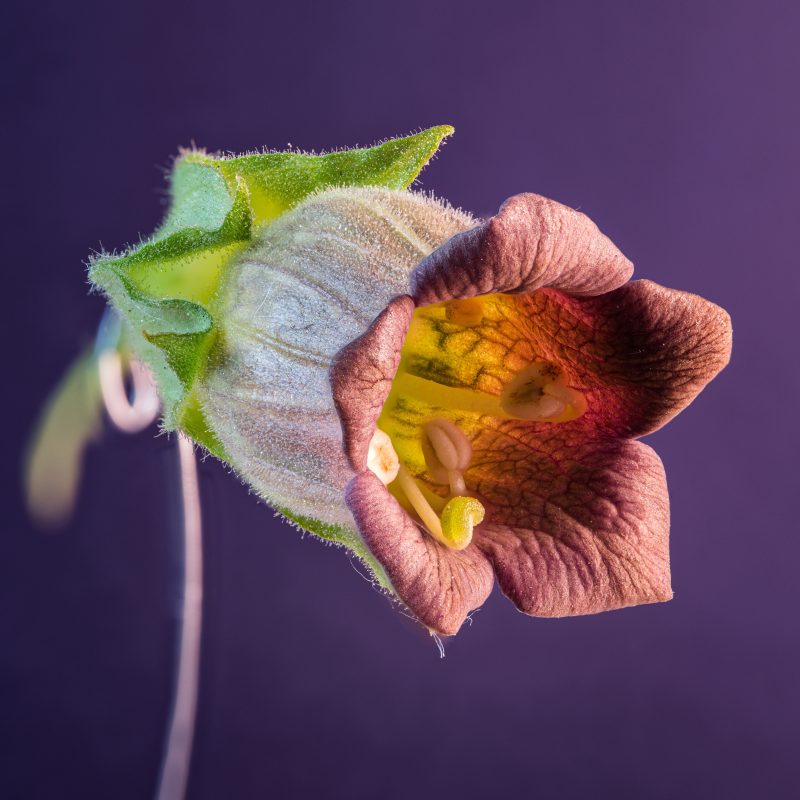
Deadly Nightshade, scientifically known as Atropa belladonna, is infamous for its toxic properties. This perennial herb, native to Europe and parts of Asia, features bell-shaped purple flowers and glossy black berries. Each part of the plant contains alkaloids, particularly atropine and scopolamine, which can disrupt the nervous system.
Atropine is a potent anticholinergic agent that can cause a wide range of symptoms, including dilated pupils, sensitivity to light, tachycardia, and hallucinations. Ingesting even a small amount of the berries can be fatal, especially for children, as the berries are often mistaken for edible fruit. The plant has been used historically in folk medicine and even as a poison in various cultures, highlighting the dual nature of its chemical makeup.
Moreover, scopolamine, another critical alkaloid present in Deadly Nightshade, is known for its utility in medicine, particularly in treating motion sickness and muscle spasms. However, its therapeutic benefits come with the risk of severe side effects when misused or overdosed, thus illustrating the delicate balance between harm and healing that poisonous flowers often represent.
Castor Bean (Ricinus communis)

Another notorious plant that deserves attention is the Castor Bean, known scientifically as Ricinus communis. The Castor Bean plant is not a true bean but is noted for its strikingly ornamental, palmate leaves and unique seed pods that can easily be mistaken for decorative elements in gardens. However, it is the seeds that pose a significant threat, as they contain ricin, one of the most potent plant toxins known.
Ricin is an incredibly toxic protein that can cause severe symptoms if ingested or inhaled. Just a few seeds can lead to poisoning, with symptoms such as vomiting, diarrhea, abdominal pain, and in severe cases, organ failure and death. Interestingly, the process of extracting castor oil from the seeds involves careful handling designed to mitigate the risk of ricin exposure, but the seeds themselves, when intact, remain a silent danger.
Historically, the Castor Bean has been exploited in various ways, including its use in traditional medicine and as a chemical weapon. Its complex relationship with humans reflects a deep-rooted understanding of nature’s potential for both nourishment and harm. Interestingly, some countries have even banned the cultivation of ricin due to the risks it poses.
Oleander (Nerium oleander)

Oleander, scientifically known as Nerium oleander, is a popular ornamental shrub celebrated for its fragrant, colorful blooms that can range from white to pink and red. However, this beauty is deeply deceptive, as every part of the plant is highly toxic. Oleander contains cardiac glycosides, primarily oleandrin and neriine, which can profoundly affect heart function.
When ingested, even small amounts of Oleander can lead to symptoms including nausea, vomiting, abdominal pain, and irregular heartbeats. The glycosides disrupt the normal flow of sodium and potassium in cardiac cells, potentially resulting in lethal arrhythmias. Notably, the plant’s toxicity extends to animals, particularly grazing livestock that might find the lush leaves appealing.
Moreover, Oleander particles can be inhaled during a fire, as the smoke from burning the plant can release toxic compounds, leading to respiratory distress. This highlights the importance of handling Oleander with care. Traditionally, the plant has been utilized in some herbal remedies, but any medical use must be approached with extreme caution due to its dangerous properties.
Hemlock (Conium maculatum)

Known primarily for its association with the tragic death of Socrates, Hemlock (Conium maculatum) is another notorious poisonous flower. This biennial plant, identifiable by its sharply pointed leaves and clusters of small white flowers, harbors coniine, a potent neurotoxin that affects the central nervous system.
The toxicity of Hemlock lies in its ability to block the neuromuscular transmission, leading to paralysis. Initial symptoms of poisoning can include blurred vision, dizziness, and a sense of impending doom, progressing rapidly to respiratory failure. Historical accounts document the eventual suffocation of victims, as their respiratory muscles become incapacitated.
Interestingly, Hemlock’s toxicity varies significantly with the season; older plants often have higher concentrations of coniine, making late summer and early fall the most dangerous times for accidental ingestions. While it has been studied for potential medicinal purposes, the risks associated with Hemlock overshadow any possible benefits. Its historical infamy serves as a cautionary tale about the perils of underestimating nature’s deadly beauty.
Water Hemlock (Cicuta maculata)

Among the most venomous plants in North America, Water Hemlock (Cicuta maculata) is often mistaken for edible vegetation, which considerably increases the risks associated with it. This plant typically grows in wetland areas and is characterized by its tall, hollow stems and clusters of white flowers, very similar in appearance to its cousin, Hogweed. Water Hemlock contains cicutoxin, a highly toxic compound that acts on the central nervous system, leading to severe convulsions and potential death.
Cicutoxin is different from the neurotoxins found in other toxic plants, as it can cause rapid and profound excitation of the neurons. Symptoms of poisoning often appear within minutes of ingestion and can include seizures, muscle twitching, and respiratory distress. Cases of Water Hemlock poisoning have been documented in both humans and livestock, particularly when animals graze in regions where the plant thrives.
In addition to its acute toxicity, Water Hemlock poses lingering risks even in dried forms; its toxins remain potent, making traditional methods of handling or composting without proper precautions dangerous. Once again, this plant exemplifies the stark contrast of nature’s allure versus its potential for harm.
Aconitum (Aconitum spp.)

Known commonly as Monkshood or Wolfsbane, Aconitum is an enchanting flower that boasts striking blue or purple blooms shaped like hooded helmets. Despite its alluring appearance, Aconitum spp. are infamous for containing potent alkaloids, mainly aconitine, which are highly toxic and can be lethal within a very short time frame.
Aconitine acts as a neurotoxin, affecting the voltage-gated sodium channels in nerve cells, leading to cardiovascular collapse and severe respiratory failure. Initial signs of poisoning often include tingling sensations, nausea, and hypotension, eventually progressing to arrhythmias and, in severe cases, death. The toxicity is particularly alarming given that this plant has historically been used in traditional medicine for various ailments. However, the fine line between therapeutic doses and lethal amounts has made Aconitum a plant to approach with utmost caution.
Culturally, Aconitum has been steeped in folklore and mystique, often linked to tales of witches and sorcery. Its association with poison and its striking beauty have cemented its place in both the gardens and the cautionary tales of many cultures.
Brugmansia (Brugmansia spp.)

Brugmansia, commonly known as Angel’s Trumpet, enchants with its large, trumpet-shaped flowers that dangle elegantly from its branches. Found in tropical and subtropical regions, this genus includes several species known for their stunning, fragrant blooms. However, Brugmansia is also notorious for its toxicity, as it contains tropane alkaloids such as scopolamine and hyoscyamine.
The compounds in Brugmansia can produce effects ranging from hallucinations to delirium and can severely affect the heart and respiratory systems. Ingestion or even inhalation of the vapors from the flowers can result in a range of symptoms, including dilated pupils, confusion, tachycardia, and in extreme cases, respiratory arrest. The plant’s allure often leads to alarming situations, especially when the flower is used in ceremonial practices or consumed in traditional medicine without proper understanding of its potency.
Historically, Brugmansia has had a dual reputation as both a beauty and a danger; it has been used in shamanistic rituals and as a tool for divination among Indigenous cultures in South America. However, the plant serves as a reminder of the crucial importance of botanical knowledge and the extensive responsibility that comes with harvesting and using natural resources.
Datura (Datura spp.)

Commonly referred to as moonflower or angel’s trumpet, Datura spp. are fascinating plants distinguished by their large, trumpet-shaped blooms that exude a sweet fragrance at night. However, what lurks behind their stunning facade are tropane alkaloids, such as atropine, scopolamine, and hyoscyamine, which render them highly toxic.
When ingested or improperly handled, Datura can induce a state of delirium, hallucinations, and confusion. The exact threshold for poisoning can vary significantly between individuals, and even small doses can lead to unsettling effects. Symptoms often start with dry mouth, flushed skin, and dilated pupils, eventually progressing into severe agitation, paranoia, and even coma in extreme cases.
Datura has a long history of use in traditional medicine and shamanistic rituals, prized for its psychoactive properties. Despite its cultural significance, the risks associated with its use must be taken seriously. Several documented cases of accidental poisonings — primarily involving children, livestock, and inexperienced herbalists — highlight the urgent need for caution when it comes to handling or consuming parts of this plant.
Jimsonweed (Datura stramonium)

Jimsonweed, while also a member of the Datura genus, requires special mention due to its widespread presence and notorious reputation. This annual plant typically thrives in disturbed soils and along roadsides, boasting spiky seed pods and white or purple flowers. All parts of Jimsonweed contain significant levels of alkaloids, particularly scopolamine and hyoscyamine, making it particularly hazardous.
The historical context of Jimsonweed is rich, with its name deriving from an episode in Jamestown, Virginia, where it was used as a hallucinogen by soldiers — resulting in chaos and poisoning. Ingestion of Jimsonweed can lead to symptoms such as dilated pupils, increased heart rate, hallucinations, and in some cases, death. The plant’s accidental ingestion is not uncommon, particularly among those who forage for wild plants or misunderstand its similarities with non-toxic varieties.
Despite the dangers, Jimsonweed is sometimes sought after for its psychoactive properties, leading to instances of recreational use that can have severe consequences. It serves as a cautionary tale in both historical and modern contexts, illustrating the thin line between curiosity and danger that can exist in nature.
Moderately Toxic Flowers
While many flowers possess lethal levels of toxicity, others can be considered moderately toxic, meaning that they pose risks but are less likely to cause life-threatening consequences. These plants often require larger quantities to cause significant harm, but they can still lead to adverse reactions, especially in children or pets.
Lily of the Valley (Convallaria majalis)

Lily of the Valley, known scientifically as Convallaria majalis, is cherished for its delicate, bell-shaped white flowers and sweet fragrance, making it a popular choice for gardens and floral arrangements. However, this enchanting plant contains potent cardiac glycosides, including convallatoxin. These compounds can disrupt cardiac rhythms and lead to serious heart complications when any part of the plant is ingested.
The symptoms of poisoning from Lily of the Valley can manifest within a few hours of consumption, often starting with gastrointestinal distress such as nausea, vomiting, and diarrhea. As the toxicity progresses, individuals may experience confusion, irregular heartbeats, and in severe cases, life-threatening cardiac arrest. Notably, even small quantities can be toxic, particularly in children and pets, making it imperative for gardeners to exercise caution around this seemingly innocent flower.
Despite its toxicity, Lily of the Valley has been historically valued in traditional medicine for its heart-strengthening properties when used in very controlled doses. However, any attempt to utilize this plant for its medicinal qualities requires intimate knowledge of its pharmacological effects, as the margin for error is perilously slim.
Foxglove (Digitalis purpurea)
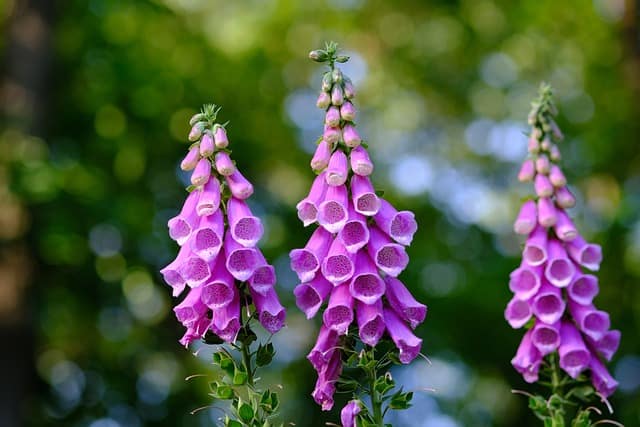
Foxglove (Digitalis purpurea) is another strikingly beautiful flower known for its tall spikes adorned with tubular blooms that can range from purple to white. This plant harbors a collection of cardiac glycosides, including digoxin and digitoxin, which are both toxic and therapeutic. While they are used in conventional medicine for heart conditions, the risk of poisoning remains high if the plant is improperly handled or consumed.
Ingesting any part of Foxglove can lead to symptoms such as nausea, vomiting, confusion, and visual disturbances. More severe reactions can include heart palpitations and arrhythmias, stemming from the plant’s impact on heart muscle function. The danger of Foxglove is exacerbated by its attractiveness; many people may be unaware of its poisonous potential, putting them at risk for accidental ingestion.
Historically, Foxglove has played a significant role in herbal medicine, and its effective compounds have paved the way for life-saving treatments for heart failure. However, the duality of Foxglove’s nature serves as a vital reminder that the boundary between healing and harm in botanical medicine can be perilously thin—emphasizing the necessity for informed usage.
Bleeding Heart (Dicentra spectabilis)

Known for its unique, heart-shaped pink and white flowers, the Bleeding Heart (Dicentra spectabilis) is a striking perennial plant that often adorns gardens. However, it contains aporphine alkaloids, such as isoquinoline, which can be toxic to both humans and animals. The toxicity level of Bleeding Heart is considered to be moderate, but it can still lead to distressing symptoms if ingested.
Consumption of Bleeding Heart can result in nausea, vomiting, and diarrhea, often accompanied by bloating and abdominal pain. Unlike other more lethal poisonous flowers, the effects of Bleeding Heart are generally not life-threatening, but they can cause significant discomfort and distress. Children are particularly at risk given the flower’s appealing shape and color.
In traditional medicinal practices, Bleeding Heart has been utilized for its purported calming effects, yet it’s crucial to remember the potential for adverse reactions. The plant’s compounds underscore the importance of careful identification and interaction with wild and cultivated flora, ensuring that botanical admiration does not lead to unintended harm.
Autumn Crocus (Colchicum autumnale)

The Autumn Crocus, scientifically known as Colchicum autumnale, is a beautiful flower that blooms in the fall, displaying large pink to purple cup-shaped flowers that emerge before its broad leaves. However, beneath its charming exterior lies colchicine, a toxic alkaloid that has significant effects on cell division and can be lethal if ingested.
Colchicine acts by disrupting the normal mitotic process, making it a crucial compound in the treatment of gout and certain medical conditions — when used in strictly controlled doses. Nevertheless, improper handling or consumption of any part of the plant, especially the bulbs, can lead to acute poisoning. Symptoms typically include severe gastrointestinal issues such as vomiting, diarrhea, and abdominal pain, followed by multi-organ failure in grave cases.
While the Autumn Crocus has found a niche in herbal medicine for its therapeutic applications, it is essential to approach this flower with caution. Its distinct appearance often leads to confusion with edible wildflowers, which can exacerbate the risk of accidental poisoning. Understanding the toxic properties of Colchicum autumnale is crucial, especially for those looking to utilize local flora for dietary or medicinal purposes.
Glory Lily (Gloriosa spp.)

Glory Lily, also known as Gloriosa superba, is a visually arresting vine characterized by its flamboyant, flame-like flowers that transition from yellow to deep red. Despite their breathtaking beauty, these flowers conceal a dangerous secret within their tuber and foliage: the glycosides known as colchicine and gloriosine. These compounds can wreak havoc on the human body when ingested.
Exposure to Glory Lily can cause severe gastrointestinal disturbances, including nausea and vomiting, with potentially life-threatening effects on the liver and kidneys. Further complications can arise from its ability to disrupt cellular mitosis, posing a risk for chronic effects if not treated promptly. Ingestion can lead to systemic toxicity, leading to muscle weakness and destructive kidney injury, particularly concerning for livestock and pets that might graze on the plant.
In certain cultures, the plant has been used in traditional medicine for various ailments, but its toxic properties necessitate expert knowledge and careful handling. The allure of the Glory Lily, coupled with its potential uses, reinforces the vital importance of plant identification and understanding their effects on health.
Bloodroot (Sanguinaria canadensis)
Bloodroot (Sanguinaria canadensis) is a perennial wildflower native to North America, known for its striking white blooms that emerge in early spring. The plant derives its name from the reddish-orange sap contained within its rhizome, which has been used historically for various purposes, including as a dye and in traditional medicine. However, this sap also harbors toxic alkaloids, primarily sanguinarine, which can pose health risks when ingested or improperly handled.
Sanguinarine is a potent irritant, affecting the mucous membranes and potentially leading to symptoms such as nausea, vomiting, and diarrhea. In topical applications, it can cause skin irritation and allergic reactions. While Bloodroot has been utilized in indigenous medicine for its antimicrobial and anti-inflammatory properties, caution is paramount, as even small amounts can lead to significant adverse effects.
Although it has attracted interest in herbal practices, the safety profile of Bloodroot is controversial, with its toxicity often overshadowing its purported benefits. The potential for misuse or improper dosage highlights the importance of understanding the risks associated with this captivating flower, especially in environments where foraging might occur.
Buttercup (Ranunculus spp.)

Buttercup is a common term that refers to numerous species within the Ranunculus genus, many of which are found in temperate regions worldwide. With their bright yellow or white blooms, Buttercups are a delightful sight in meadows and gardens, but they contain toxic compounds known as ranunculin, which can convert into toxic protoanemonin when the plant is damaged. This transformation heightens the associated risks, particularly for unsuspecting foragers.
When ingested, Buttercup can lead to a myriad of symptoms including gastrointestinal upset, including nausea, vomiting, and diarrhea. In more severe cases, contact with the sap (especially when the plant is damaged) can cause dermatitis and swelling in sensitive individuals. Livestock grazing on Buttercups may also suffer from toxicity, which can affect their behavior and overall health.
Interestingly, some species of Buttercup have been historically used in traditional medicine for their anti-inflammatory properties, albeit with extreme caution. However, due to the variances in toxicity among different species, it is crucial to properly identify and understand any Buttercup being considered for medicinal use or garden presence. The beauty of these flowers should serve as a reminder of their hidden dangers.
Clematis (Clematis spp.)
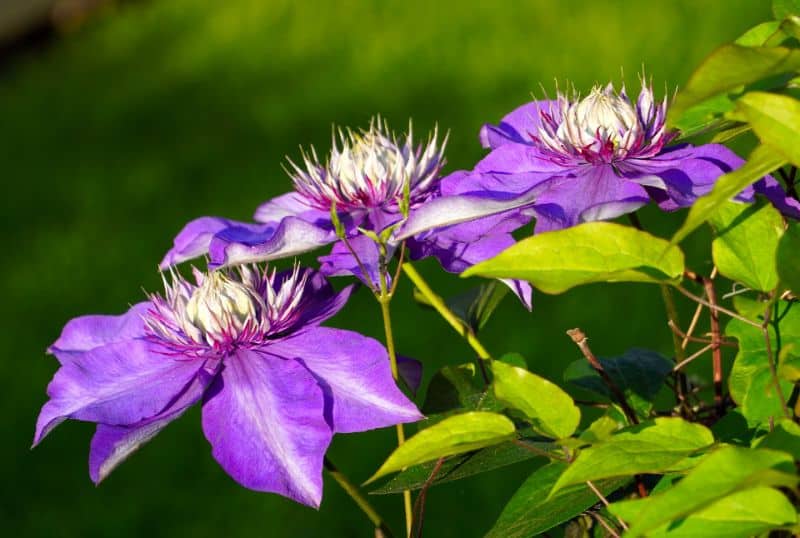
Clematis is a popular climbing plant among gardeners, renowned for its diverse range of species and stunning flowers that can present in an array of colors, including purples, blues, and whites. However, many Clematis species also contain toxic elements that deserve attention. The flowers, leaves, and roots contain compounds like anemonin and other glycosides that can have toxic effects.
Consuming parts of the Clematis plant can result in gastrointestinal irritation, characterized by nausea, vomiting, and diarrhea. Additionally, some individuals may experience allergic reactions upon contact, with symptoms including skin irritation and rashes. The severity of these reactions can vary depending on the individual’s sensitivity and the amount of plant material encountered.
Historically, Clematis has been associated with various medicinal uses, particularly in folk remedies, where it was sometimes employed to manage pain and inflammation. However, the uncontrolled use of Clematis for medicinal purposes may prove hazardous due to its toxicity levels. Ingesting heavier amounts of the plant can escalate to more serious health consequences, including damage to the kidneys and severe systemic reactions.
Delphinium (Delphinium spp.)
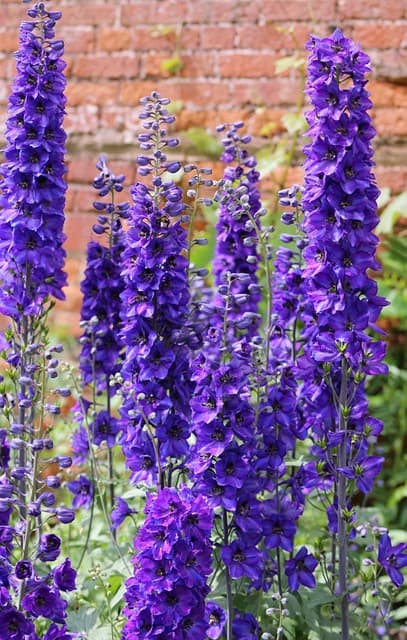
Delphiniums are beloved for their tall spikes adorned with vibrant blue, purple, and white flowers, making them a striking addition to gardens. However, the beauty of these flowers comes with a hidden danger. Delphiniums contain toxic alkaloids called delphinine and other compounds such as meganthosine, which can have serious effects on human and animal health.
When ingested, even small amounts of Delphinium can lead to symptoms like nausea, vomiting, and abdominal pain. The alkaloids present affect the nervous system, potentially resulting in muscle weakness, respiratory distress, or even cardiac failure in severe cases. Livestock, particularly horses, are highly susceptible to Delphinium toxicity, and the flowers pose a considerable risk when grazing on pastures.
Despite their toxicity, some cultures have historically used Delphinium extracts for medicinal purposes, typically in very controlled and diluted forms. However, the risks associated with improper use outweigh potential benefits, making careful identification and avoidance paramount, particularly for gardeners who may unwittingly cultivate this deadly flower among their plants.
Mildly Toxic Flowers
Mildly toxic flowers serve as a reminder that even seemingly harmless plants can cause discomfort or adverse reactions. Gardeners looking to cultivate a beautiful landscape should be aware of both the aesthetic qualities and the potential risks of including mildly toxic species in their gardens. Understanding these plants fosters a more comprehensive appreciation of biodiversity and helps ensure safety for pets, children, and adults alike.
Daffodil (Narcissus pseudonarcissus)
Daffodils, or Narcissus pseudonarcissus, are emblematic of spring, heralding warmth with their bright yellow and white flowers. However, these charming blooms contain toxic compounds called lycorine, a phenanthridine alkaloid that can induce serious symptoms upon ingestion. While the plant is often enjoyed as a decorative element, it’s essential to recognize its poisonous potential.
Ingesting Daffodil bulbs, which are the most toxic part of the plant, can lead to severe nausea, vomiting, diarrhea, and abdominal pain. Symptoms usually appear within hours and can often be accompanied by dizziness, confusion, and in extreme cases, cardiac dysrhythmias or convulsions due to lycorine’s action on the central nervous system. Children are particularly at risk, as they may mistake the bulbs for food, prompting accidental ingestion.
Interestingly, Daffodil flowers themselves are less toxic than the bulbs, but caution is still warranted, as ingestion of any part of the plant can cause discomfort. Despite their toxicity, Daffodils have been utilized in folklore for various medicinal purposes, though modern herbalists advise against such practices due to the unpredictable nature of the plant’s effects.
Tulip (Tulipa spp.)

Tulips are synonymous with spring and are cherished for their vibrant colors and distinctive cup-shaped blossoms. However, Tulipa species contain toxic compounds, primarily glycosides and alkaloids. Among these, tulipalin A and tulipalin B are noteworthy for their potential to cause irritation upon contact or ingestion.
While the petals themselves are not considered highly toxic, the bulbs—the part of the plant most commonly encountered during planting—carry a higher concentration of these harmful compounds. Ingestion of Tulip bulbs can lead to symptoms that range from mild gastrointestinal distress, such as nausea and vomiting, to more severe reactions in sensitive individuals, including transient respiratory problems and skin irritation upon contact.
Pets, particularly dogs and cats, are particularly vulnerable to Tulip bulb toxicity, as they may be attracted to the scent or texture of the bulbs. Symptoms in pets can include lethargy, drooling, and vomiting, necessitating prompt veterinary intervention for severe cases. This potential for toxicity underscores the importance of keeping Tulips out of reach of curious animals and ensuring any fallen plant debris is promptly cleaned up.
Hyacinth (Hyacinthus orientalis)

Hyacinths are fragrant garden staples, known for their dense clusters of bell-shaped flowers that come in a variety of colors. However, these attractive blooms contain toxic compounds in their bulbs, specifically calcium oxalate crystals and various alkaloids. The calcium oxalate can cause mechanical irritation, making Hyacinth bulbs a significant concern, particularly for gardeners and those who handle them without protective gear.
Exposure or ingestion of Hyacinth bulbs can lead to symptoms akin to those caused by other plants containing calcium oxalate. As such, individuals may experience irritation of the mouth and throat, leading to burning sensations, swelling, and gastrointestinal discomfort, which may manifest as nausea, vomiting, and diarrhea. The severity of the symptoms typically correlates with the amount of bulb material ingested.
In pets, Hyacinth toxicity can present as symptoms ranging from drooling and vomiting to more serious concerns such as lethargy and depression. Gardeners must exercise caution when planting Hyacinths, ensuring protective gloves are worn when handling bulbs. Awareness of the plant’s toxic traits can help prevent accidents and ensure that these beautiful flowers are enjoyed safely, both in the garden and at home.
Azalea (Rhododendron spp.)

Azaleas, a subset of the Rhododendron genus, are popular ornamental shrubs known for their stunning floral displays. However, they also contain a group of toxins known as grayanotoxins, which are present throughout the plant, including the leaves, flowers, and stems. Grayanotoxins can interfere with sodium channels in the body, potentially leading to serious health issues.
Consumption of Azalea leaves or flowers can result in a condition known as “rhododendron poisoning,” presenting with symptoms such as nausea, vomiting, diarrhea, and abdominal pain. In more severe cases, ingesting larger quantities can lead to cardiovascular symptoms, including arrhythmias and hypotension, resulting from the plant’s effect on heart function.
While Azaleas are visually appealing and are often planted for their vibrant colors in spring, they pose a risk to pets and livestock that may graze on them. Animals that ingest any part of the Azalea may exhibit symptoms ranging from mild gastrointestinal distress to more severe neurological and cardiac effects. Therefore, it is paramount for gardeners, particularly those with animals, to be aware of the risks associated with this beautiful flowering shrub.
Rhododendron (Rhododendron spp.)

Rhododendrons are iconic shrubs known for their lavish clusters of blooms in vibrant shades of pink, purple, and white. However, these beloved plants contain toxic compounds known as grayanotoxins, which are particularly concentrated in the leaves and nectar. Grayanotoxins affect sodium channels in the body, leading to disruptions in normal cellular function.
When ingested, even small amounts of Rhododendron can result in symptoms that include nausea, vomiting, and abdominal pain. More troubling are the potential cardiovascular effects: grayanotoxins can cause irregular heart rhythms, including bradycardia (slow heart rate), hypotension (low blood pressure), and in severe cases, cardiovascular collapse, necessitating immediate medical attention.
Livestock, especially goats and sheep, are particularly susceptible to rhododendron toxicity, as these animals may nibble on the leaves without recognizing the associated risks. The consumption of rhododendron can lead to severe digestive upset and even death in extreme cases. For gardeners, maintaining awareness of the toxic nature of this shrub is crucial, especially in environments accessible to pets and livestock, to prevent accidental poisoning.
Pieris (Pieris spp.)

Pieris, also known as Andromeda or lily-of-the-valley shrub, is another exquisite addition to gardens, prized for its attractive evergreen foliage and cascading clusters of delicate white or pink flowers. However, Pieris species contain toxins called piperidines and other compounds that can trigger alarming symptoms when ingested.
Ingestion of any part of the Pieris plant can result in a range of gastrointestinal issues, including nausea, vomiting, and diarrhea. These symptoms arise from the plant’s piperidine alkaloids, which can irritate the digestive tract. In more severe cases, especially in pets or sensitive individuals, signs such as difficulty breathing, lethargy, or confusion may develop due to a more systemic toxic reaction.
The bright flower clusters may tempt curious children or pets, highlighting the need for vigilance in gardens where Pieris is present. While some traditional uses of Pieris extracts exist in herbal medicine, these practices should be approached with extreme caution, as the potential for toxicity and adverse reactions often far outweigh any purported benefits.
Poisonous Flowering Vines
While many flowering vines add vibrant colors and charm to gardens, some, like Wisteria and certain species of Clematis, can be poisonous. A more nefarious group of flowering vines to mention involves those that contain toxic properties capable of causing allergic reactions or systemic toxicity in those who encounter them. Many of these plants, despite their beauty, harbor dangerous alkaloids or other harmful compounds.
Sweetpea (Lathyrus odoratus)

Sweetpeas are cherished for their delightful fragrance and vibrant blossoms, often used in floral arrangements and gardens. However, the graceful appearance of Sweetpeas belies a latent toxicity, mainly attributed to a compound called Lathyrus sativus toxin or beta-oxalyl-L-alpha, which can lead to greater concerns when larger quantities are consumed.
While Sweetpeas are generally considered mildly toxic, ingestion of the seeds or large amounts of the plant can lead to symptoms such as nausea, vomiting, and gas. In particular, the seeds carry a higher concentration of toxins and can be especially dangerous if eaten in bulk. Chronic exposure to Lathyrus sativus toxins can lead to a serious condition known as lathyrism, which is characterized by paralysis and other neurotoxic symptoms due to nerve damage.
Historically, lathyrism has been noted in regions where the seeds of certain Sweetpea species have been consumed as a significant part of the diet, particularly in times of famine. Awareness of the potential dangers associated with this cheerful flower is critical, particularly in households with children or pets who might be tempted to nibble on the plants or seeds.
Wisteria (Wisteria spp.)
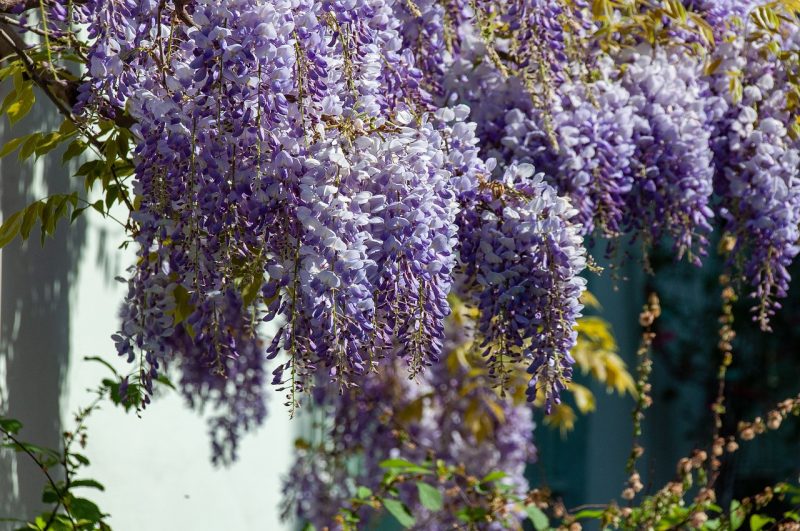
Wisteria is renowned for its stunning cascades of blossoms that drape beautifully over arbors and trellises, creating breathtaking displays in gardens. Despite its picturesque appeal, every part of the Wisteria plant, particularly the seeds and pods, contains toxic glycosides, primarily wisterin. These compounds can lead to serious health issues when ingested.
When consumed, Wisteria can cause a range of symptoms, including nausea, vomiting, abdominal cramps, and diarrhea. The severity of these symptoms can vary depending on the quantity ingested and the individual’s sensitivity to the toxins. In some cases, ingesting large amounts of the seeds can lead to more severe reactions, such as difficulty swallowing or respiratory distress.
Wisteria toxicity is a significant concern for pets, especially curious dogs and cats that might be tempted to chew on fallen plant materials. It is crucial for gardeners to be vigilant in managing Wisteria plants, ensuring that pets do not have access to the toxic parts, and monitoring for any signs of ingestion. While Wisteria can create an enchanting atmosphere in gardens, it’s important to balance beauty with responsibility by understanding its poisonous attributes.
Honeysuckle (Lonicera spp.)

Honeysuckle is often cherished for its sweet fragrance and attractive, tubular flowers that attract pollinators. However, while some species of Honeysuckle produce edible nectar, others contain toxic compounds, particularly in their berries and foliage. The toxic components, such as saponins and glycosides, can cause adverse reactions if consumed in significant amounts.
The ingestion of Honeysuckle leaves or unripe berries can lead to symptoms like nausea, vomiting, and diarrhea. In most cases, the symptoms are mild, and serious effects are rare, particularly for humans, as our bodies tend to tolerate low levels of these toxins. However, children and pets may be at risk if they mistakenly consume larger quantities, leading to discomfort and possible gastrointestinal upset.
Interestingly, while the edible flowers attract humans and pollinators alike, caution should be exercised regarding which species of Honeysuckle are planted in gardens. Native species are often promotesed for their ecological benefits and safety, while some invasive varieties may produce toxic berries that pose greater risks. By understanding the differences among Honeysuckle species, gardeners can make informed decisions about planting practices and create safe environments for their families and pets.
Jasmine (Jasminum spp.)

Jasmine is celebrated for its delicate, highly fragrant flowers that have inspired poets and perfumers alike. However, certain species of Jasmine should be approached with caution, as they are known to contain compounds that can lead to toxic reactions. Primarily, alkaloids, such as those found in Jasminum sambac (Arabian Jasmine), can yield adverse effects if ingested.
While small amounts of Jasmine, such as the flowers used in herbal teas or culinary creations, are generally safe for consumption, larger quantities can cause agitation, headache, and gastrointestinal distress. The specific toxicity of Jasmine species can vary, with some—such as the highly prized Jasminum nudiflorum (winter jasmine)—presenting more serious risks if consumed in excess.
Like many other beautiful but potentially toxic plants, it’s essential for gardeners to educate themselves on the species they cultivate. In particular, families with pets should be cautious, as animals may be inclined to chew on Jasmine leaves or flowers, leading to unexpected health issues. Overall, while Jasmine adds an alluring fragrance and charm to any garden, awareness of its toxic properties can help prevent accidental exposure and ensure a safe and pleasant gardening experience.
Poison Ivy (Toxicodendron radicans)
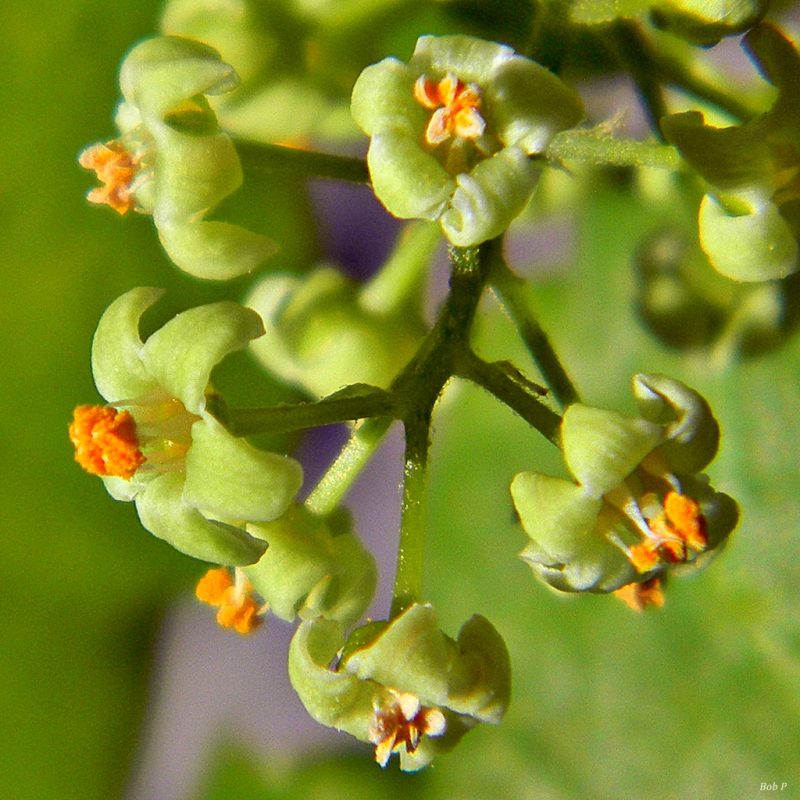
Poison Ivy is infamous for its ability to evoke painful rashes upon contact with the skin, owing to the presence of an oil known as urushiol. This oil is a potent allergen and can cause significant reactions in sensitive individuals. Poison Ivy’s typical three-leaf arrangement is a key identifying feature, making it essential for people to recognize this plant in order to avoid contact.
The urushiol in Poison Ivy can adhere to clothing and outdoor gear, persisting long after the plant has been touched, which means it can indirectly cause irritation when inadvertently transferred to other surfaces. When the oil comes into contact with the skin, it triggers an immune response that leads to itching, redness, and swelling, often accompanied by blisters. For those who have had a previous reaction to urushiol, future encounters may result in more severe symptoms.
Managing exposure to Poison Ivy involves wearing protective clothing and using barrier creams. Additionally, preventing the spread of this plant in gardens or yards requires diligent removal of seedlings and careful disposal, as even the roots can produce new growth. Education about Poison Ivy is essential for anyone enjoying the outdoors, as awareness can mitigate the risks associated with this notorious native plant.
Poison Oak (Toxicodendron diversilobum)
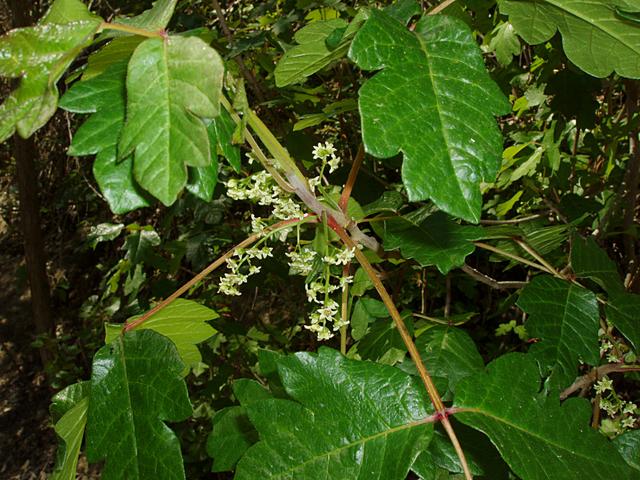
Similar to Poison Ivy, Poison Oak possesses urushiol in its leaves, stems, and roots, making it another prominent allergenic plant. With its characteristic lobed leaves resembling an oak tree, Poison Oak can often be found in sandy habitats along the west coast of the United States. Its appearance can vary significantly, making identification crucial to avoiding contact.
The reactions caused by Poison Oak are strikingly similar to those caused by Poison Ivy, including the development of a red, itchy rash and swelling. In some cases, the severity of the reaction may depend on the individual’s sensitivity and the amount of urushiol contacted. Like Poison Ivy, urushiol can linger on clothing or surfaces and can lead to a cascading effect of exposure if proper precautions are not taken.
To safeguard oneself from the perils of Poison Oak, awareness of its habitats is critical. It often grows in dense, shrubby patches and can be easily concealed among other vegetation. When engaging in outdoor activities in areas where Poison Oak is present, wearing long sleeves, gloves, and sturdy boots is essential. Washing clothing and gear promptly after contact can also help eliminate any lingering urushiol that could lead to unwanted rashes.
Passionflower (Passiflora spp.)

Passionflower is a diverse genus with over 500 species, celebrated for its elaborate and exotic-looking flowers, which are often used in ornamental gardening as well as herbal medicine. While many species are relatively safe, others contain compounds that can lead to confusion regarding their edibility and safety.
One of the notable toxic compounds found in some Passionflower species is cyanogenic glycosides, which can release cyanide when metabolized. Ingesting large quantities of these flowers or their parts can lead to cyanide poisoning, although symptoms may vary depending on the species and the amount consumed. Common symptoms of mild poisoning include dizziness, headache, and gastrointestinal discomfort, while severe reactions can lead to respiratory distress and increased heart rate.
Interestingly, some parts of the Passionflower plant are used in herbal remedies for their purported calming effects; however, the potential toxicity means that caution should be exercised, particularly when it comes to wild foraging or using plants sourced from uncertain origins. Hence, understanding the exact species and their respective medicinal or toxic properties is crucial when exploring the used applications of Passionflower.
Moonseed (Menispermum canadense)

Moonseed is a climbing vine that produces small, dark, berry-like fruit and yellowish flowers that can be mistaken for those of the more benign vine species. Native to North America, this plant is distinct for its unique crescent-shaped seeds, which are a crucial identifying feature. However, the apparent innocence of its fruits belies the danger that they represent.
The principal toxic component of Moonseed is a compound called menispermine, which is an alkaloid that has shown to have toxic effects when ingested. While the berries resemble edible fruits, consuming them can lead to gastrointestinal distress, including symptoms such as nausea, vomiting, abdominal pain, and diarrhea. There are even cases where larger amounts have induced more severe reactions, including dizziness and confusion due to the central nervous system effects of the toxin.
Additionally, although the foliage is not highly toxic, it is advisable to handle the plant with caution to avoid gastrointestinal symptoms that may arise from indirect ingestion, such as through unwashed hands after gardening. Educating those who venture into areas where Moonseed grows—whether they are foragers, outdoor enthusiasts, or gardeners—is vital to prevent accidental poisonings.
Meadow Saffron (Colchicum autumnale)

Meadow Saffron, also known as Autumn Crocus, is a perennial plant notable for its striking, crocus-like flowers that bloom in the fall. Despite its resemblance to saffron (Crocus sativus), this plant should not be confused with the culinary spice, as it contains a different, highly toxic agent: colchicine. This alkaloid serves as a potent toxin and is primarily used in medicine for its powerful anti-inflammatory properties, but it can also be deadly if misused.
Colchicine acts by interfering with cell division, which can lead to cellular damage and ultimately result in multi-organ failure in cases of severe poisoning. Symptoms of ingestion may include nausea, vomiting, diarrhea, and abdominal pain, followed by more serious effects like respiratory distress and cardiovascular collapse. The bulbs of Meadow Saffron, in particular, are extremely toxic; ingestion of even small amounts can prompt severe toxicological responses.
Due to these dangers, it is paramount that individuals avoid consuming any part of this plant. Educating gardeners and nature enthusiasts about the toxic aspects of Meadow Saffron—especially its bulbs, which may be mistaken for edible ones—is essential for prevention and safety.
Desert Marigold (Baileya multiradiata)

The Desert Marigold is a perennial plant native to the deserts of the southwestern United States and Mexico. Characterized by its bright yellow flowers and silvery-green foliage, it thrives in arid conditions where few other plants can flourish. While not traditionally recognized for its toxicity, Desert Marigold contains compounds known as flavonoids, which can cause mild toxicity in certain sensitive individuals, particularly if consumed in large quantities.
Ingesting the flowers or leaves of Desert Marigold can result in a range of symptoms including gastrointestinal upset, nausea, and skin irritation on contact. Additionally, prolonged exposure or consumption may lead to more serious reactions in sensitive individuals, particularly those who have pre-existing allergies to plants in the aster family, as Desert Marigold is classified in the same family (Asteraceae).
While this plant is often utilized in traditional medicine for its anti-inflammatory properties, caution must be exercised to ensure that users are aware of potential side effects. The safety of edible landscapes and wild foraging means being informed and discerning, as even plants traditionally considered safe can have toxic effects depending on individual sensitivities or levels of consumption.
Frangipani (Plumeria spp.)
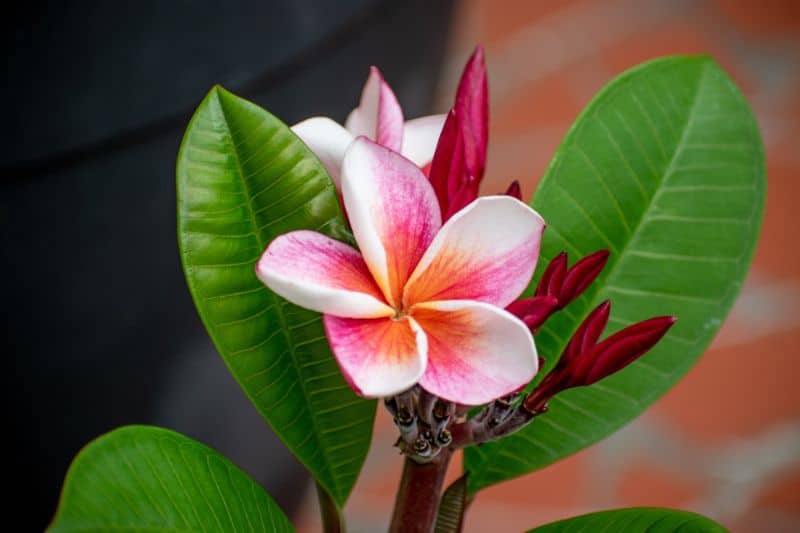
Frangipani, often associated with tropical vacations and leis, is a genus of flowering plants known for their striking, fragrant blooms. Commonly found in warm climates, these flowers are often used in ornamental gardens and landscaping due to their colorful and fragrant flowers. However, it is crucial to recognize that while Frangipani blooms are beautiful and their sap may be enjoyed in traditional ceremonies and rituals, the plant contains toxic substances that can be harmful.
Frangipani leaves and sap contain milky latex, which can lead to contact dermatitis in sensitive individuals. Furthermore, the plant contains compounds that may cause gastrointestinal issues if ingested. The saponins present in the plant can lead to symptoms such as nausea, vomiting, diarrhea, and abdominal pain, particularly in children and pets who may be more prone to exploring and tasting the plant.
While Frangipani flowers are widely used in traditional medicine, including for their analgesic and anti-inflammatory properties, its consumption must be approached with caution. Awareness about the potential toxicity of Frangipani helps preserve its beauty while ensuring safety for all who encounter it in its native tropical habitats or in ornamental settings worldwide.
Bougainvillea (Bougainvillea spp.)

Bougainvillea is a brilliantly colorful flowering vine native to South America, known for its flamboyant bracts that can come in shades of magenta, purple, orange, or white. While Bougainvillea is not considered highly toxic, it can cause irritation in some individuals, particularly those with sensitive skin. The plant’s milky sap contains compounds that may lead to contact dermatitis, characterized by rashes, itching, and swelling upon exposure.
Ingestion of Bougainvillea leaves or bracts can lead to gastrointestinal disturbances, although incidents are rare and typically mild. Symptoms may include nausea, vomiting, and diarrhea. It’s also worth noting that the spines on the stems can pose a physical hazard, potentially leading to puncture wounds, which may become infected if not treated properly. When gardening or handling Bougainvillea, using gloves is recommended to avoid skin irritation from its sap and to protect against thorn injuries.
Due to its semi-toxicity, Bougainvillea is best planted in areas out of reach of inquisitive pets and young children. Raising awareness about its potential effects can enhance enjoyment of this beautiful plant while ensuring safety in outdoor spaces.
Hibiscus (Hibiscus spp.)

Hibiscus, a genus encompassing a diverse range of flowering plants, is celebrated for its striking blossoms and is commonly found in tropical and subtropical gardens worldwide. While many varieties of Hibiscus are primarily non-toxic and even used in culinary applications, certain species can pose risks if ingested in significant quantities.
One species of concern, the Hawaiian native Hibiscus tiliaceus (also known as the seaside mahoe), contains compounds that can lead to mild physiological reactions. Overconsumption of the flowers or leaves can result in gastrointestinal upset, with symptoms like nausea and vomiting. While the flowers are used in traditional teas and jams, caution is advised for those who may have allergies or sensitivities to hibiscus.
Additionally, contact with certain Hibiscus species can cause skin irritation or allergic reactions in susceptible individuals. The best practice is to handle Hibiscus with care and educate children about the distinction between non-toxic flowers and those that may cause discomfort. Balancing the beauty of Hibiscus in gardens with prudent safety measures can support a healthy and pleasant environment.
Cowslip (Primula veris)

Cowslip, a perennial herb prevalent in fields and meadows across Europe, is renowned for its delicate yellow flowers and pleasant fragrance. This enchanting bloom has long been a part of folklore and traditional medicine, yet it harbors certain toxic properties that merit caution. The primary components of concern in Cowslip are saponins, which can trigger adverse reactions if ingested in significant amounts.
Ingesting Cowslip can lead to symptoms such as nausea, vomiting, and diarrhea, particularly if large quantities of the leaves or flowers are consumed. Furthermore, individuals who are allergic to other plants in the Primula genus may experience heightened reactions, including dermatitis or respiratory issues. Some compounds in the plant sap can also irritate the skin upon contact, causing localized redness or swelling.
While Cowslip has been traditionally used for its potential medicinal benefits and to produce herbal teas, it is imperative to educate enthusiasts about the safe usage of this plant. Understanding the delicate balance between traditional uses and inherent risks can empower individuals to enjoy Cowslip’s beauty without compromising their safety.
Creeping Jenny (Lysimachia nummularia)

Creeping Jenny, known for its lush green foliage and bright yellow flowers, is a popular ground cover plant that thrives in various growing conditions. While it provides visual interest in gardens, this plant contains compounds that can be toxic, particularly to pets such as cats and dogs.
The toxic components of Creeping Jenny primarily revolve around its saponins. When ingested, these compounds can lead to gastrointestinal disturbances, including stomach upset, vomiting, and diarrhea. Additionally, pets that nibble on the plant may experience lethargy or loss of appetite as notable secondary effects. While Creeping Jenny is typically considered less dangerous to humans, caution is advised, especially for young children who may accidentally consume parts of the plant.
In terms of skin contact, Creeping Jenny is generally less problematic but may still cause some minor irritation in sensitive individuals. Gardeners should recommend keeping this plant in areas where children and pets have limited access to mitigate the risks associated with accidental ingestion.
Doll’s Eyes (Actaea pachypoda)

Doll’s Eyes, or Actaea pachypoda, is a striking perennial herb native to North America, known for its unique white flowers and distinctive red berries. The plant’s common name is a nod to the appearance of its fruits, which have an uncanny resemblance to the eyes of dolls. Yet, behind this charming façade lies a very real danger: the berries and other parts of the plant contain a potent compound called cardiogenic glycoside, particularly a substance known as callicarpenal.
The toxicity of Doll’s Eyes primarily affects the heart, leading to potentially fatal arrhythmias if ingested. Consuming even a handful of berries can result in symptoms such as nausea, vomiting, and severe cardiac distress. Ingested in larger quantities, the glycosides can wreak havoc on the cardiovascular system, possibly leading to cardiac arrest.
Caution is especially necessary around Doll’s Eyes given its attractive appearance, which may entice curious children and animals. All parts of the plant are considered toxic, making it vital for garden enthusiasts to place this flower in areas that are not easily accessible. Awareness of its toxic nature can prevent accidental poisonings and serve as a reminder that beauty in nature often must be respected with care.
European White Water Lily (Nymphaea alba)

The European White Water Lily, or Nymphaea alba, is celebrated for its majestic blooms that grace numerous lakes and ponds across Europe. Its large, white or pink flowers unfurl beautifully and float serenely on the water’s surface, exuding a tranquil beauty that enchants many admirers. However, hidden within this serene image are toxic components that necessitate respect and caution.
The toxicity of Nymphaea alba primarily arises from its alkaloids and glycosides, particularly nymphaeine and other compounds that can have psychoactive effects. While the plant’s flowers and seeds are traditionally utilized in herbal medicine for their mild sedative properties, consuming them incorrectly or in excessive amounts can lead to adverse reactions including dizziness, nausea, and hallucinations.
Furthermore, caution is advised when handling the plant, as its sap can also cause skin irritation in sensitive individuals. The risks associated with the water lily stress the importance of knowing how to properly prepare and use any part of this plant if one chooses to experiment with its medicinal properties.







